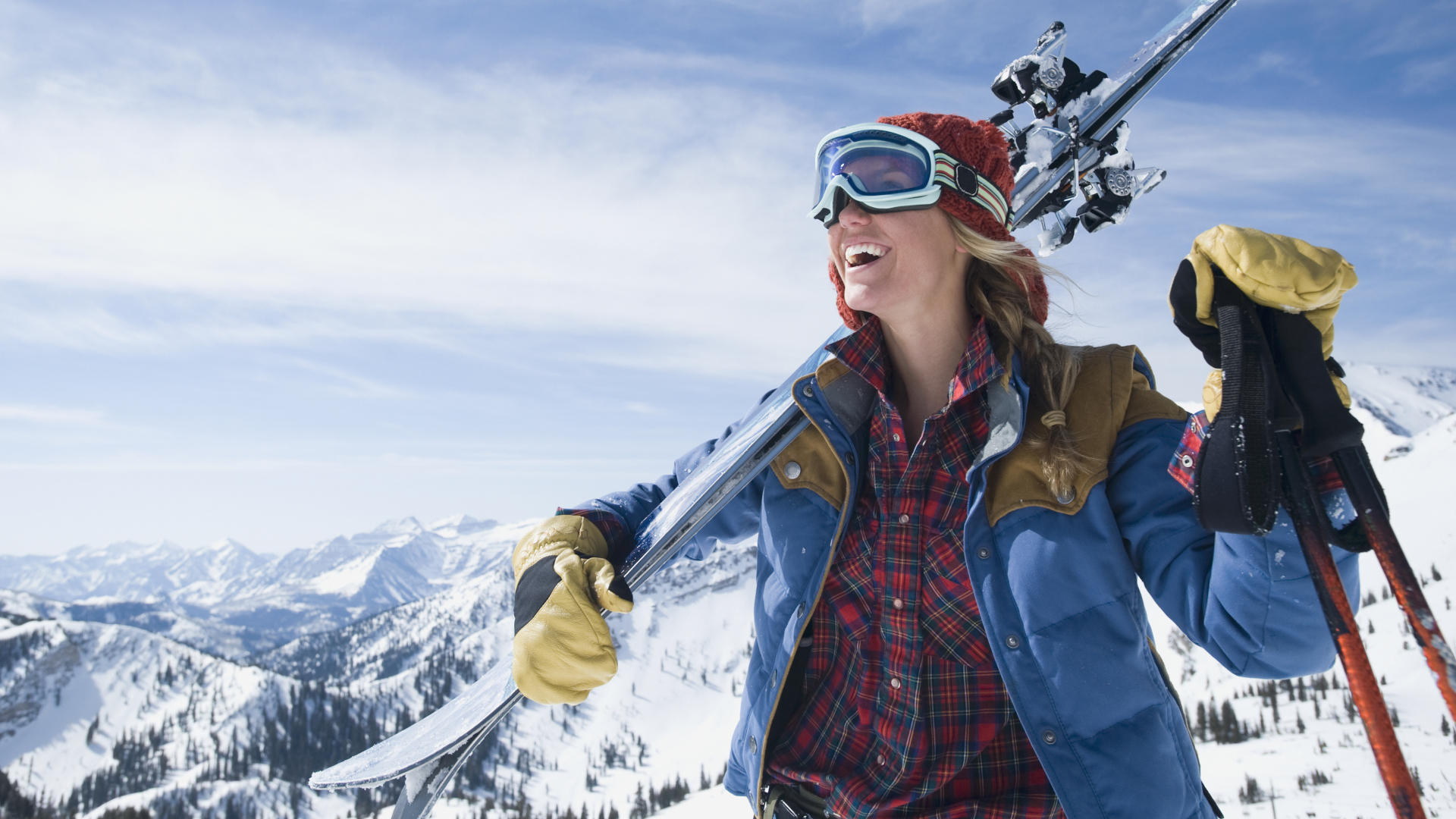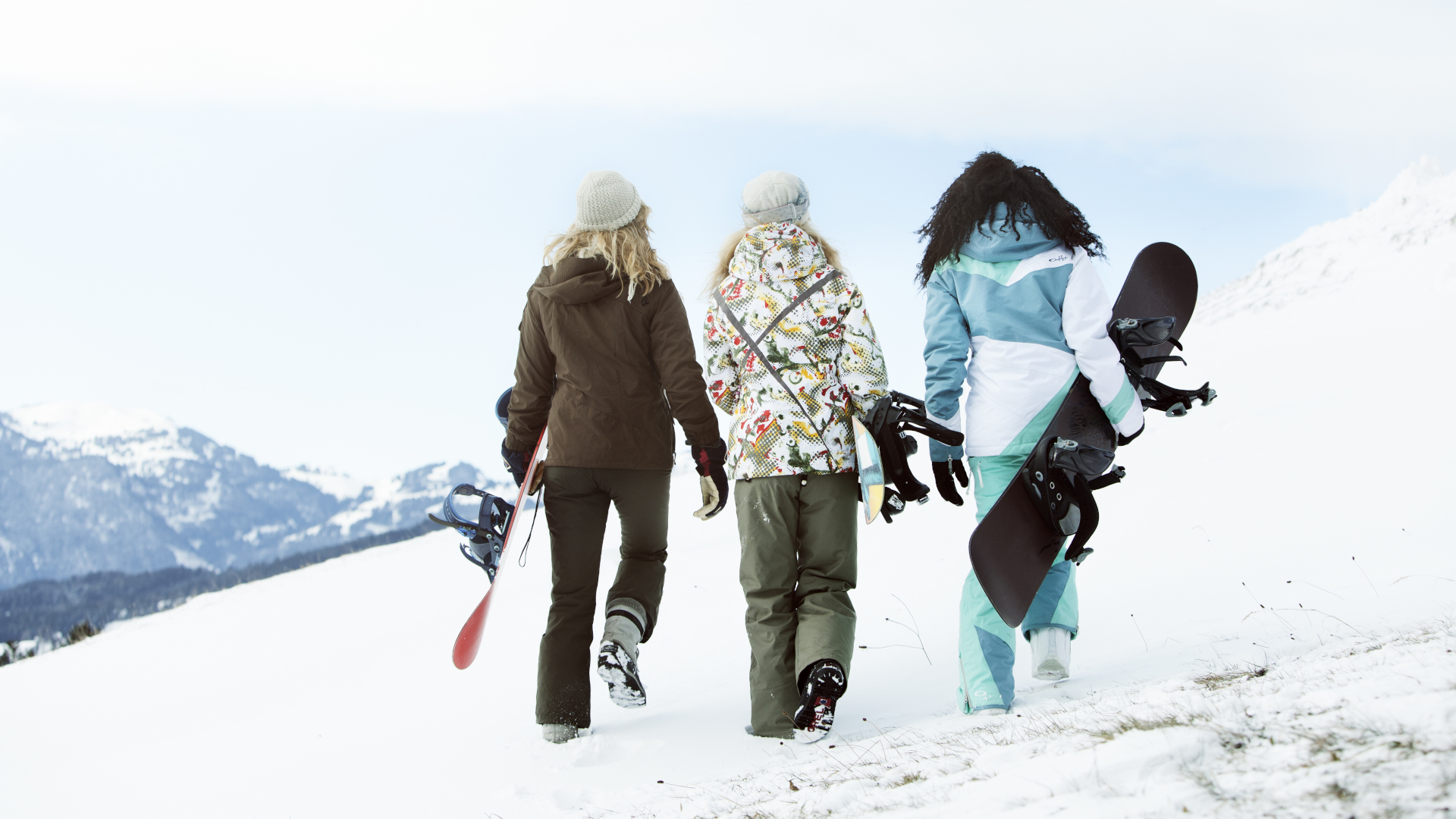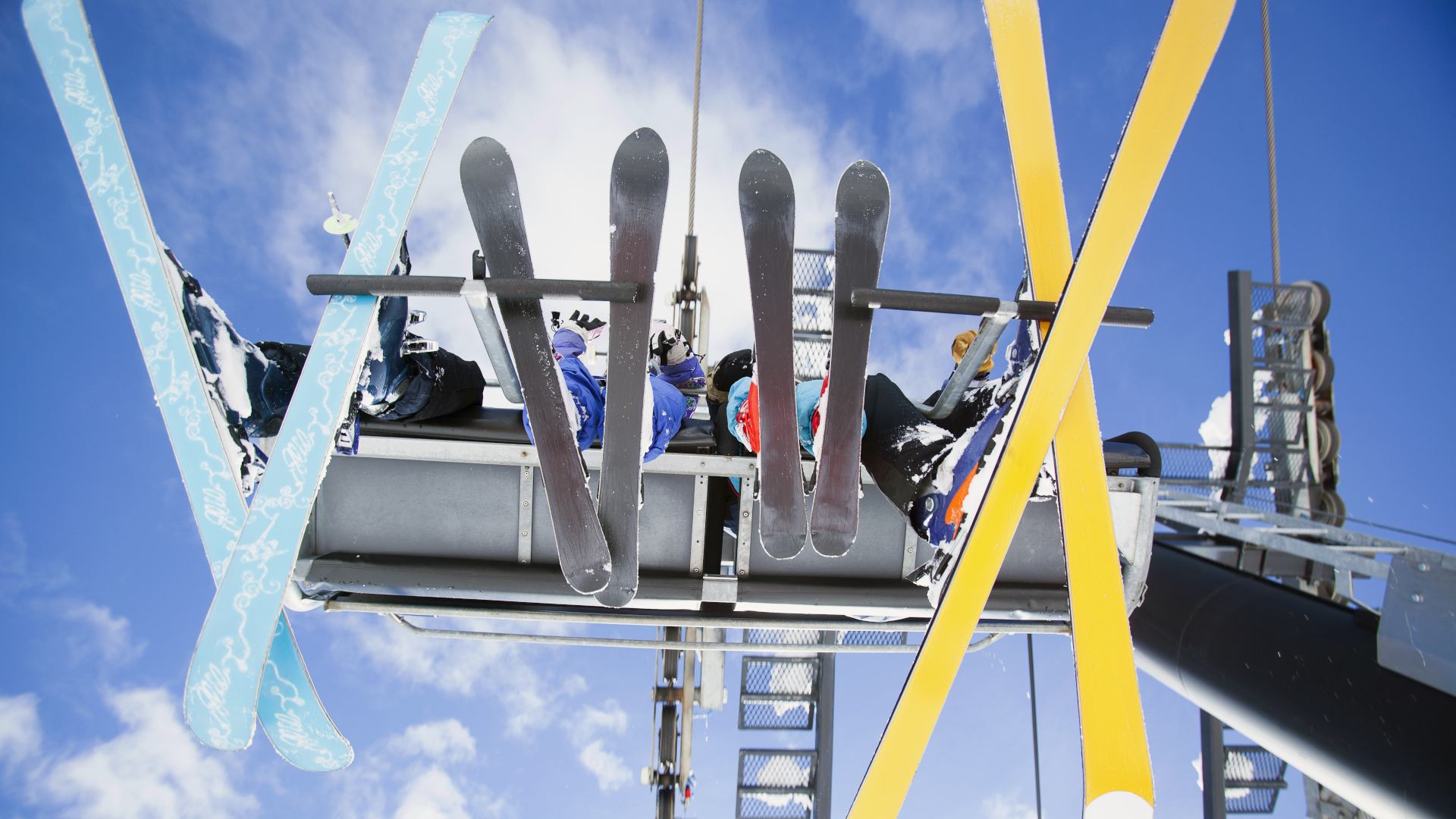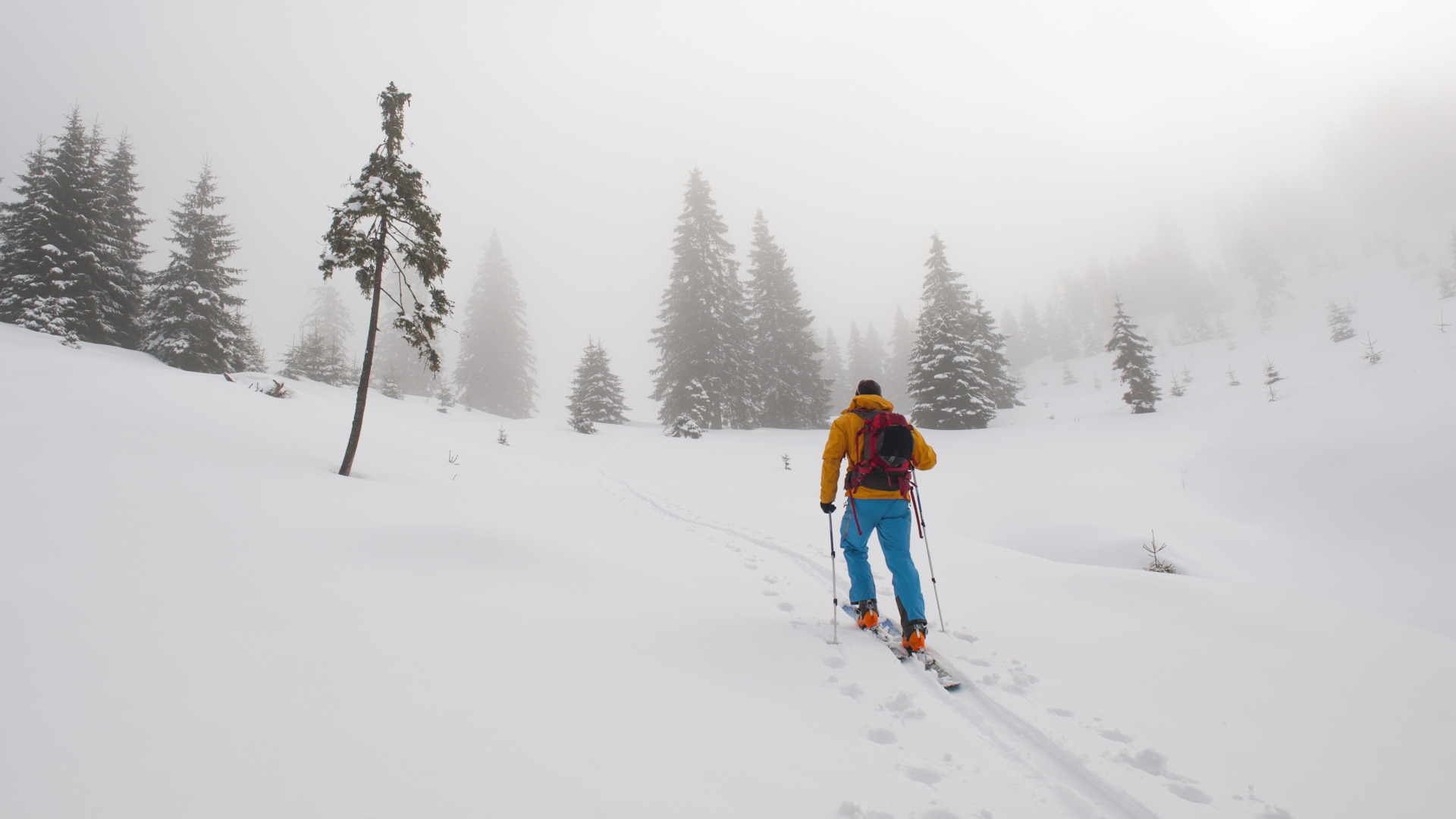Shell vs insulated ski jacket: which should you choose?
The question of whether to insulate or not all comes down to where you’re going, and what type of skiing you plan to do when you get there

When I lived in Colorado, my boyfriend and I must have looked like we were on different planets when we went skiing together. No matter the weather – sub zero or in the 50s, blizzard or blue sky – I’d always be wrapped up in my puffiest down jacket (not to mention insulated ski pants and a balaclava) and he’d always be wearing a light softshell over a base layer. I never broke a sweat and he never even shivered. We were actually pretty similar in size and body composition, but if we’d swapped outfits, I'm certain I’d have died of hypothermia and he’d have had a total meltdown in the middle of a ski run, torn all his clothes off and jumped into a snow drift to cool off.
All this is to say that whether you choose a shell or an insulated ski jacket comes down, in part, to your own thermoregulation. Why some people always feel hot and others always feel cold is a whole other article, but for this article we want to help you decide between a shell vs insulated ski jacket by explaining the differences, and how what you plan to do in them matters.
Made up your mind? Our guides to the best ski jackets for men and ski jackets for women are full of great options to keep you warm.

Shell vs insulated ski jacket: what’s the difference?
Any jacket that’s actually intended for skiing should provide weather protection – either waterproofing or water-resistance – and some warmth. The main difference between the two is how that warmth is provided.
To confuse matters slightly, there are two types of shell ski jackets – hardshell and softshell. Softshell jackets are stretchy, provide a little insulation and are breathable, but not great for very wet conditions. Hardshell jackets are lighter and waterproof, but won’t keep you as warm and aren’t as stretchy or breathable. Meanwhile, an insulated ski jacket will use down insulation to trap tiny pockets of warm air close to your skin and keep you toasty all while fending off wet snow.
If you’re newer to winter sports, it might seem obvious that snow is cold and therefore you want as much warmth as possible, but it’s not always that simple. In addition to knowing if you tend to run very hot or cold, there are other factors you need to consider, such as the type of skiing you’ll be doing, when and where you’ll be doing it. Confused? Don’t worry, we’ll do our best to explain it all in this article.

Shell vs insulated ski jacket: what type of skiing are you doing?
Obviously, any jacket that you plan to wear for skiing needs to keep you warm, but in deciding how much warmth you need, you first have to consider what type of skiing you are planning to do.
All the latest inspiration, tips and guides to help you plan your next Advnture!
If you’re planning on buying a lift ticket, you should expect to have to stand in long lift lines while sitting on the lift itself can get pretty chilly. Plus, you’ll probably get higher in elevation with a chair ride than you will if you have to hike up – the temperature difference between the base of the resort and the top of the mountain can be as much as 20°F. So the chances are decent that you’ll want to consider an insulated ski jacket, and we strongly recommend you go with synthetic insulation rather than down, since down will stop insulating if it gets wet. This all holds especially true if you’re just dropping in for a week of skiing mid-winter when the conditions are at their best. If you’re waiting until the spring to go skiing, an insulated jacket may be too warm.
If you live near a ski resort and intend on skiing for the entire season, which could be as long as six months in some parts, you might want to consider the merits of a shell jacket, which you can wear all the way through till spring, and wear an insulated layer such as a fleece jacket underneath it on very cold days.

If you’re planning on skiing uphill AKA skinning and touring around the backcountry, it’s another matter altogether. You are going to get hot and sweaty on the uphill, even on the coldest days, and an insulated jacket will mean you’re far too warm. You’ll definitely want a breathable shell jacket with pit zips over a base layer so you don’t get damp and chilled when you stop. Your shell will shield you from a cold wind but allow moisture to escape when you work up a sweat – just make sure you carry an insulated layer in your backpack for the downhill.
If you’re planning to do a bit of both, you’ll either want two jackets, or go with the layering system.

Shell vs insulated ski jacket: where are you going?
The other important question you need to ask yourself is where you’ll be skiing, since not all winters are created equally. A lot of ski days out west are pretty mild and even when they’re not, lots of sunshine and low humidity make them far more tolerable. If you already know you’re a fair weather skier and you only plan to ski in Colorado, there’s a chance you’ll be too warm wearing an insulated jacket on the resort, unless you’re a person who always feels cold, and a softshell jacket might suffice. Consider the Montane Dyno LT Jacket or Forclaz Trek 900 Windwarm mountain-trekking softshell which we tested for our roundup of the best softshell jackets.
However, if you’re going to be skiing in the northeast, or across the pond in Scotland, you can expect brutal, bone-chilling cold pretty much any time there’s enough snow to get a ski day in, so unless you’re one of those people who always feels that they have magma at their core, you’d be mad to brave it without insulation. Don’t forget that part of the reason those places feel so cold is the high humidity, so make sure you get a waterproof insulated jacket, such as the Helly Hansen Verbier Infinity Jacket or Columbia Mount Bindo II Waterproof Ski Jacket. If you’re layering up and wearing a shell, it will have to be a hardshell to cope with the wet, heavy snow.

Shell vs insulated ski jacket: weight, mobility and cost
Some final, albeit less important, considerations are how much the jacket weighs, how easily you can move in it and cost. Generally speaking, a shell jacket is going to be very lightweight while an insulated jacket might be a bit heavier, depending on the jacket. This doesn’t matter a whole lot for resort skiing, but you don’t want to feel weighed down by your clothing for skinning so make sure your gear is lightweight for the backcountry.
You also want to be able to move easily for backcountry touring when you’re climbing and bending down to adjust your bindings. Softshells are going to provide lots of mobility, while hardshells are a little stiffer and the bulk of an insulated jacket might make it quite hard to move well.
When it comes to cost, you can probably find the best bargains among the cheapest insulated jackets and pick up something for under $100, but you can also drop close to a grand on a high tech insulated ski jacket if you really want to. The cheapest shell jackets are a little pricier than the cheapest insulated versions – around $150. All in all though, you can probably find something you're happy with in your price range regardless of which jacket you choose.
- The best down ski gloves: keep your hands warm and comfortable
Julia Clarke is a staff writer for Advnture.com and the author of the book Restorative Yoga for Beginners. She loves to explore mountains on foot, bike, skis and belay and then recover on the the yoga mat. Julia graduated with a degree in journalism in 2004 and spent eight years working as a radio presenter in Kansas City, Vermont, Boston and New York City before discovering the joys of the Rocky Mountains. She then detoured west to Colorado and enjoyed 11 years teaching yoga in Vail before returning to her hometown of Glasgow, Scotland in 2020 to focus on family and writing.

